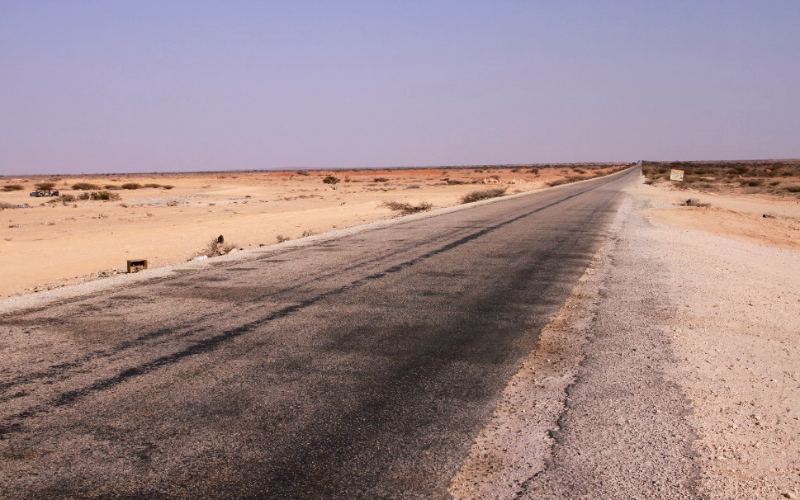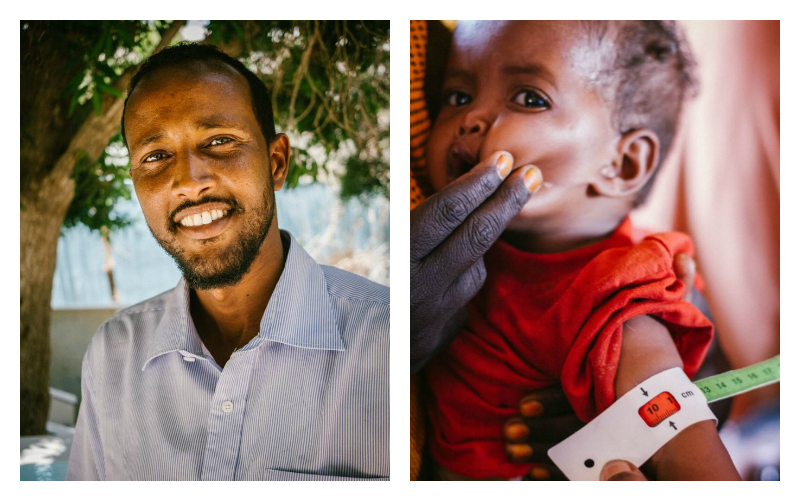By Maxwell Moser, World Vision International
This is Puntland, Somalia, after three years of drought. I’m travelling along a jagged road in a landcruiser. My companion is a nutritionist from World Vision Somalia. His name is Mohammud.
 A stretch of tarmac in Puntland, Somalia.
A stretch of tarmac in Puntland, Somalia.
Up ahead, we see a few camels, hazy through the waves of heat. On each is perched a tent-like structure, swaying back and forth with the camels’ strides. A man is leading them with a rope tied to their halters.
“He has everything he owns on those camels,” says Mohammud, of the father on the road. “His food, his water, even his wife and children.”
In Canada, families rarely need to move, just to stay alive. When they do move, it’s usually with a large van filled with possessions. There’s no need to pack food and water. And in most cases, your livelihood doesn’t need to travel with you.
But you’re living in a different country, with different ways of life. And you’re not facing a famine.
The opposite extreme
Mohammud and I had just visited a camp for people who’ve been displaced within their own country, and are now struggling to survive. Levels of acute malnutrition are critical, particularly within these camps. My companion’s expertise is crucial.
Mohammud grew up in this region, and earned his master’s degree nutrition in India. Now he’s back in his home town, working for World Vision Somalia.
He has seen the impact of extreme drought on his family’s own herd of camels. He’s watched it strain the capacity of their farmland. And he’s watched the price of water double within months.
This crisis is unique, he says, because it’s not only being felt by nomadic and rural populations. People in the towns and cities are suffering too.
“Malnutrition is everywhere”
As we travel, Mohammud explains the importance of nutrition -- not just during a drought, but the world over.
“Nutrition is actually very interesting, we all need it,” he says. “Malnutrition is everywhere. Here in Somalia, people are suffering from undernutrition, where you are from, people are suffering from overnutrition.”
He says it without a hint of sarcasm. It’s all very interesting to him, and he believes there’s better nutrition for all of us. Some places just need it more than others. And right now, Somalia is one of those places.
 Left: Mohammud/Right: A young child’s arm is measured by staff. The red marker means he’s severely malnourished.
Left: Mohammud/Right: A young child’s arm is measured by staff. The red marker means he’s severely malnourished.
Famines with borders
Mohammud says Somalia is an example of an older time, of the way humans used to live -- without government and without borders.
I think back to the man with all of his belongings on the backs of three camels. Herders used to follow the rains from one land to the next, nomadic tribes with their animals. They were constantly seeking a better place to survive. But with borders, says Mohammud, this is impossible.
“There used to be no borders,” he tells me, “and the rich and the poor lived together more closely.”
The sun is setting, and the land is beginning to cool. We stop so that Mohammud, the drivers, and the six armed guards travelling with us can pray.
I wander to the road while I wait, and am greeted by an all-too familiar sight: piles of bone, a patch of fur here and there. Right there in front of me, a family’s livelihood has baked, decomposed and returned to the earth.
Mohammud is right that there are borders between us. But not just between lands. I can see the distances between rich and poor, urban and rural -- over-nourished and the undernourished.
There is plenty and there is famine, and the simplest of borders separates one from the other: rain.